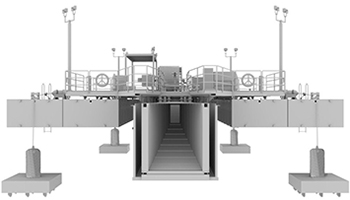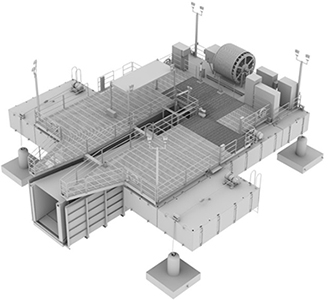 Problem: The U. S. Army Corps of Engineers built Cougar Dam on the South Fork McKenzie River in the 1960s. Biologists estimate the habitat above the dam once supported more than 4,000 returning adult spring Chinook.
Problem: The U. S. Army Corps of Engineers built Cougar Dam on the South Fork McKenzie River in the 1960s. Biologists estimate the habitat above the dam once supported more than 4,000 returning adult spring Chinook.
The dam’s temperature control tower helps closely mimic pre-dam downstream water temperatures, but poses serious challenges for endangered juvenile spring Chinook salmon trying to migrate out to sea. All water passing Cougar Dam must flow though the tower, but flow conditions at the corner of the reservoir where the tower is located make it hard for fish to find and enter it. Passage efficiency and survival rates of those that do manage to enter the tower are not high enough to support a self-sustaining wild Chinook population.

Solution: The project delivery team working on downstream passage options at Cougar Dam identified the most likely solution as a surface collector that attracts and holds juvenile Chinook until they can be transported around the dam. However, the team realized that there were too many data gaps to make an informed decision about design.
The portable floating fish collector is a small-scale experimental fish collector to help inform the decision-making and design of a future permanent downstream passage solution.